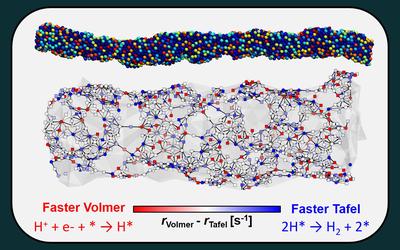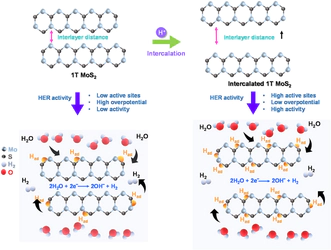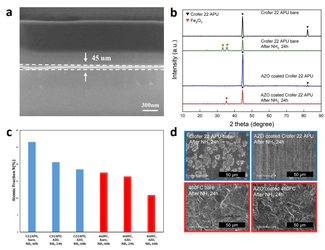MISSION
To accelerate the transition to a renewable energy society by discovering new materials, chemicals, and processes through multi-scale simulation and data science.
RESEARCH
We interface multi-scale materials simulation and data science. Specifically, we develop innovative methods that accelerate materials design.

Latest Publications

In response to growing demand for cost-effective, highly active, and stable catalysts for the electrocatalytic oxygen evolution reaction (OER), we have developed a comprehensive database for AA’BB’O6-type cubic double perovskites (DP) and implemented a machine learning high-throughput screening (ML-HTS) strategy to discover promising DP for OER. Our approach covers a vast chemical space of approximately 6,500 DP by considering all valid compositional combinations. Additionally, we have developed two machine learning (ML) strategies to predict thermodynamic stability (energy above the hull and Pourbaix decomposition energy) and binding Gibbs free energy, enabling an efficient exploration of the chemical space. Both models, trained with minimal calculations, achieve high accuracies even with unrelaxed structures (mean absolute error (MAE) 0.028 and 0.031 eV/atom for Pourbaix stability and energy above hull, respectively, and MAE 0.124 and 0.129 eV for O* and OH* binding Gibbs free energy, respectively). By utilizing the descriptor-based ML models and graph-based pretrained universal ML potential, we evaluated the stability of approximately 3,500 bulk structures and the activity of around 14,000 surfaces, respectively. This ML-HTS approach led to the successful and efficient identification of 15 novel DPs that are predicted to be more active and stable than established DPs such as LaSrCoFeO6 (LSCF).

Hydrogen evolution reaction (HER) is currently the most efficient industrial method for producing clean, nontoxic, and environmentally friendly hydrogen using effective optimal electrocatalysts. In particular, Transition metal dichalcogenides are promising candidates for HER electrocatalysts due to their unique 2D layered structure. Among them, molybdenum disulfide (MoS2) stands out for its optimal structural and electronic properties, as well as its flexibility. These properties greatly enhance HER activity and enable the exploration of various MoS2 phases, which demonstrate HER activity comparable to that of platinum (Gibb’s free energy [ΔGH∗]: ∼0.08 eV), emphasizing their prominence as high-performance electrocatalysts. One of these phases is 1T (tetragonal) MoS2, which exists in a metallic form and exhibits catalytic activity at both its edge and basal sites. This activity can be significantly enhanced by effectively stabilizing its behavior to prevent its restacking into 2H (hexagonal) MoS2. In this study, a simple electrochemical proton intercalation method is used to enhance the properties of 1T MoS2. Notably, the proton-intercalated 1T MoS2 demonstrates an excellent electrocatalytic HER performance, achieving the lowest overpotential of 187 mVRHE at 10 mA∙cm−2 and the smallest Tafel slope of 48 mV∙dec−1. Additionally, it demonstrates durability for up to 60 h in a 0.5 M H2SO4 electrolyte at a current density of 10 mA∙cm−2. Density functional theory calculations confirm that proton intercalation significantly influences material behavior and increases the interplanar distance, thereby enhancing the hydrogen (H∗) adsorption performance and lowering the ΔGH∗ value. Charge transfer analysis confirms that charge accumulation at the active sites facilitates rapid proton reduction, which correlates with increased electron mobility and efficient catalytic turnover. The proton-intercalated 1T MoS2 also demonstrates an increased density of states at the Fermi level, confirming its high conductivity and its role as the most optimal HER electrocatalyst among the polymorphs. This increased conductivity facilitates improved charge transfer efficiency at the catalyst-electrolyte interface, which contributes to more effective proton reduction.

NH3 fuel-based SOFCs can overcome the inefficiencies of other hydrogen sources, but NH3 deteriorates solid oxide fuel cell (SOFC) separators by nitriding. Here, experimental and computational approaches are used to investigate aluminum-doped zinc oxide (AZO) as a SOFC separator coating candidate for nitriding mitigation. Experimental characterization reveals how AZO coating slows down the nitriding of steel separators, and that AZO conductivity improves upon NH3 exposure. A phase diagram construction framework combines a machine learning potential (MLP), density functional theory (DFT), and grand potential energy calculations to confirm the phase stability of AZO-based coatings under operating conditions. An a priori linear response simulation approach is developed to precisely reproduce ZnO electronic structure and conductivity. This methodology is adapted to explain why AZO-based coating color changes upon nitriding, the physical contributions to which are determined by AZO conductivity versus Al impurity concentration relationships, and explain how steam incorporation into AZO-based coatings can increase their conductivity. Energy-dispersive x-ray Spectroscopy (EDS), and the calculation of NHx adsorption energetics, infers ZnO surface nitriding susceptibility diverts nitrides away from other coating or separator components. This work demonstrates insights into the design of nitriding-resistant materials for NH3-based SOFCs.
Latest News and Gallery

